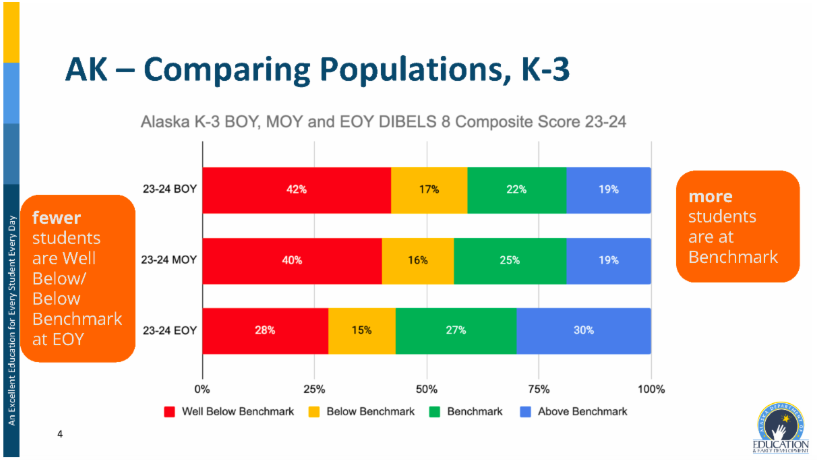At the start of the academic year, only 41 percent of Alaskan students met early literacy benchmarks. According to information released by Mike Dunleavy’s office by the end of the school year, the percentage of students meeting benchmarks rose to 57 percent. Among kindergarten students, proficiency rates rose from 24 percent a the beginning of the year to 60 percent by the end of the year. Dunleavy credits the improvement to the State of Alaska implementing the 2nd year of the Alaska Reads Act. The recently concluded school year is the first year of the law’s accountability requirements.

Chart depicts the distribution of Alaska K-3 students reading proficiency relative to benchmarks at the beginning of year (BOY), middle of year (MOY), and end of year (EOY).
“The remarkable progress we’ve seen, especially among our youngest learners is a testament to the collective effort of Alaskans across the state,” said DEED Commissioner Deena Bishop. “These results not only highlight the effectiveness of the Alaska Reads Act, but also sets a promising trajectory for the educational future of Alaska.” State Board Chair James Fields extended heartfelt gratitude to the educators, parents, and students for their dedication and hard work. “This progress is a testament to the commitment and resilience of our teachers, students, and their families,” Chair Fields said. “For further details on the Alaska Reads Act and its impact, please visit The Alaska Reads Act – Education and Early Development.
